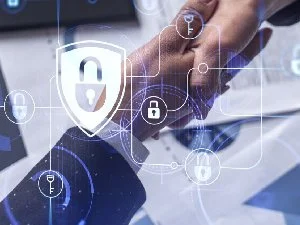Strengthening Cyber security Defenses in Real-Time
Posted By Remote Techs On 04-October-2023

As the threat landscape expands, businesses must adopt proactive strategies to safeguard their sensitive data and digital assets.
As technology advances, so do cybercriminals’ tactics, making it imperative for companies like Remote Techs to adopt proactive and real-time cyber security measures to safeguard sensitive information and ensure business continuity.
Cyber security is a collective effort, and our dedication to education is a cornerstone of our real-time defense approach.
Continuous Monitoring and Threat Detection
One of the core components of our real-time cyber security strategy is continuous monitoring and threat detection. We utilize advanced monitoring tools with real-time insights into our clients’ networks, applications, and devices. Addressing any unusual activities or potential vulnerabilities prompt is essential to adequately identify any unique activities or potential vulnerabilities.
By leveraging cutting-edge technologies like AI-driven anomaly detection and behavior analysis, we can spot deviations from standard patterns, enabling us to respond swiftly to potential security breaches. This proactive approach empowers us to address threats before they escalate into significant security incidents.
Rapid Incident Response
In the realm of cyber security, every second counts. With cyber-attacks becoming more sophisticated and persistent, a delayed response can lead to substantial damage. We have established a robust incident response protocol at Remote Techs that swings
into action when a threat is detected.
Our incident response team comprises experienced cybersecurity professionals well-versed in handling various security incidents. We ensure that we take the right actions promptly to mitigate the impact of a security breach through meticulously crafted playbooks and well-defined communication channels.
Automated Patch Management
Contact Remote Techs For IT Support Los Angeles Today
We provide comprehensive, tailored solutions ensuring smooth and secure operations. Trust our expertise to empower your business for growth and resilience.
Contact UsSoftware vulnerabilities often serve as gateways for cybercriminals to exploit systems. To counter this, we have embraced automated patch management as a critical component of our real-time cyber security strategy. Our designs can identify and deploy critical patches across networks, applications, and devices on the fly.
This approach minimizes the window of opportunity for potential attackers and ensures that our clients’ systems are running the latest and most secure software versions. Regular patching is a proactive step towards reducing the attack surface and enhancing the overall cyber security posture.
User Behavior Analytics
In the ever-expanding realm of remote work, user behavior becomes critical to cyber security. At Remote Techs, we employ advanced user behavior analytics tools to monitor how individuals interact with systems and data. Detecting abnormal activities that indicate unauthorized access or compromised accounts is crucial for identifying and responding to potential security breaches.
We can create baselines for normal activities by understanding typical user behavior patterns. Our system triggers alerts when deviations occur, allowing our cyber security experts to investigate and intervene as needed. This approach ensures that even the most subtle signs of a breach are detected and addressed in real time.
Education and Training
While technology is crucial to our real-time cyber security strategy, an educated workforce is equally essential. We actively engage in ongoing training and education programs for our team members and clients. By fostering a culture of cyber security awareness, we empower individuals to become the first line of defense against cyber threats.
We equip our clients with the knowledge they need to make informed decisions about their digital interactions through workshops, webinars, and informative resources.
In conclusion, the ever-evolving cyber threat landscape demands a proactive and agile approach to cyber security. At Remote Techs, we actively enhance cybersecurity defenses in real-time by employing continuous monitoring, intrusion detection, zero-trust principles, threat intelligence, and the expertise of human analysis.